The remarkable history of Adelaide Oval
IT has been the scene of some of the most dramatic moments in cricket history, including the Bodyline Test of 1933, but over 146 years Adelaide Oval has had an extraordinary history all of its own.

SA News
Don't miss out on the headlines from SA News. Followed categories will be added to My News.
IT HAS been the scene of some of the most dramatic moments in cricket history, including the Bodyline Test of 1933, but over 146 years Adelaide Oval has a remarkable history all of its own.
From the early days the Oval, wedged between the River Torrens to the south and the parklands and St Peter’s Cathedral to the north, was regarded as one of the world’s most beautiful sporting venues.
Even through radical recent renovations, it has retained the integrity of its old-world charm while significantly improving facilities and the overall experience of playing and watching cricket.

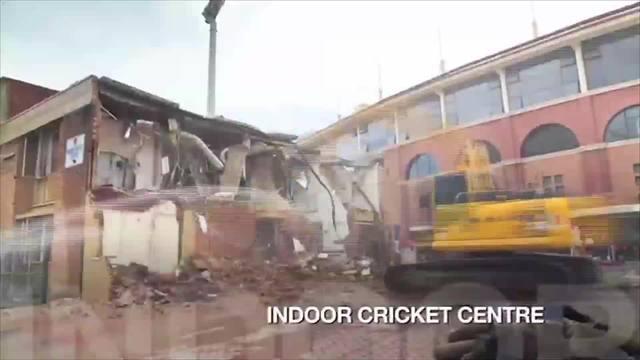
The ground was established in 1871 with the formation of the South Australian Cricket Association (SACA) and its unusual dimensions, originally 190m x 125m, meant extra-long boundaries down the ground and short ones to the sides. They favoured batsmen who played square of the wicket, with cuts, hooks or pulls.
The first century scored at the ground was recorded by John Hill, father of legendary Australian Test player Clem Hill, in January 1878.
It took more than a decade for any significant structure to be erected; the George Giffen Stand named after the South Australian all-rounder who scored more than 1000 runs and claimed 103 wickets in 31 Tests for Australia, was built on the Oval’s western side in 1882.
Two years later, in December 1884, the Oval became only the sixth venue in the world to host a Test match, when England defeated Australia by eight wickets. Since then the ground has hosted Test match cricket every summer.
The bank of spectacular Moreton Bay fig trees at the northern end was planted for welcome shade in the 1890s and the grassy mounds at each end, ‘The Hills’, were created in 1898 from earth dug out and carried from the banks of the Torrens River.
In 1900, a white picket fence was put up surrounding the Oval, and a cycling track established inside the fence. The iconic Oval scoreboard, instantly recognised the world over and heritage listed today, was designed by architect Kenneth Milne, and began service on November 3, 1911.
The clock was added in 1912 and the windvane in the 1930s, in time for the infamous Bodyline incidents during the 4th Test of the 1932/33 Ashes series, in January 1933.
A record 174,452 spectators attended, with a single-day record of 51,682. Mounted police surrounded the ground after angry scenes at the second Test at the MCG were expected to be repeated in Adelaide.
Fears of a riot increased when Australian wicketkeeper Bert Oldfield was cracked on the skull by a thunderbolt from English speedster Harold Larwood.

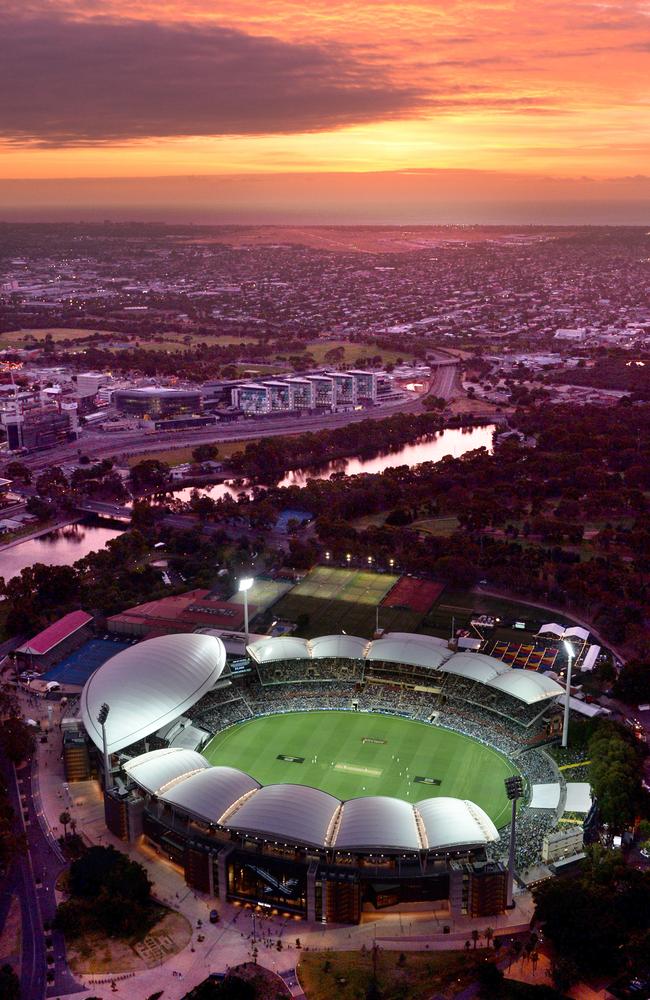
Australian captain Bill Woodfull rushed from the stands in a suit to comfort his teammate. He later delivered the famous line: “There are two teams out there. One is trying to play cricket and the other is not.”
Another renowned Test at the Oval was the fourth of the Frank Worrell Trophy, between Australia and West Indies in January 1961. Surrounded by fieldsmen, Australia’s Ken “Slasher” MacKay and Lindsay “Patsy” Kline withstood a pace assault from Wes Hall, a box of tricks from Sir Garfield Sobers and a spin lesson from maestro Lance Gibbs for near on two hours, facing 178 balls to earn a heroic draw.
In 1976 the ground hosted its first One-Day International, between Australia and West Indies, which the hosts won by five wickets.
In 1990 the Sir Donald Bradman Stand replaced the John Creswell Stand.
The decision to construct light towers in 1995 saw Adelaide City Council and North Adelaide residents objecting on grounds including light pollution.
A compromise of retractable lights saw the first night cricket match played at the Oval on December 6, 1997 when South Africa and New Zealand played a One-Day International.
On Saint Patrick’s Day 1998, a tower collapsed and two men were left injured, dangling from a crane by their harnesses. After an inquiry and a protracted legal battle, new plans for permanent towers caused further disputes, but the lights were finally switched on in 2000.
In 2003, two grandstands, named after SA’s cricketing Chappell brothers Ian, Greg and Trevor were completed. In 2009, the State Government announced it would fund redevelopment of the Oval into a multipurpose sports facility to accommodate AFL football and pay off SACA’s $90m debt.
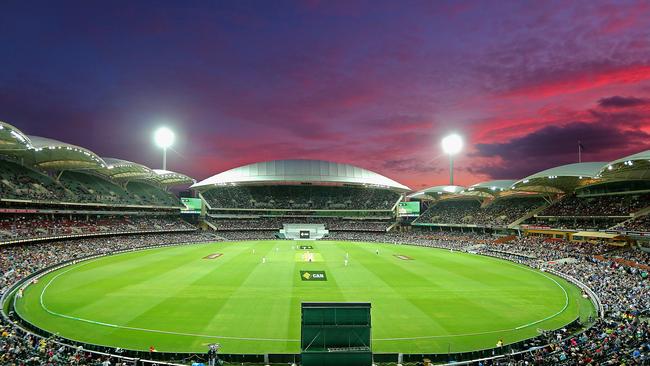
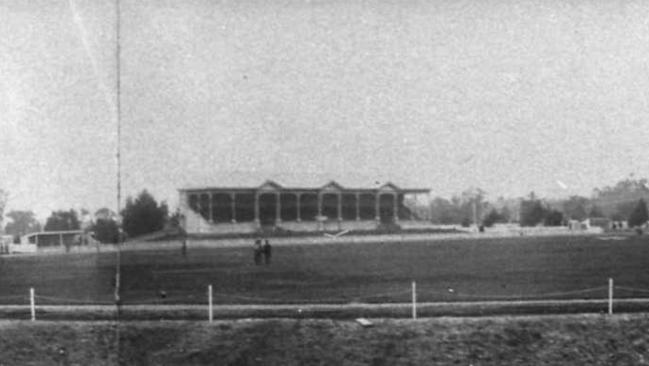
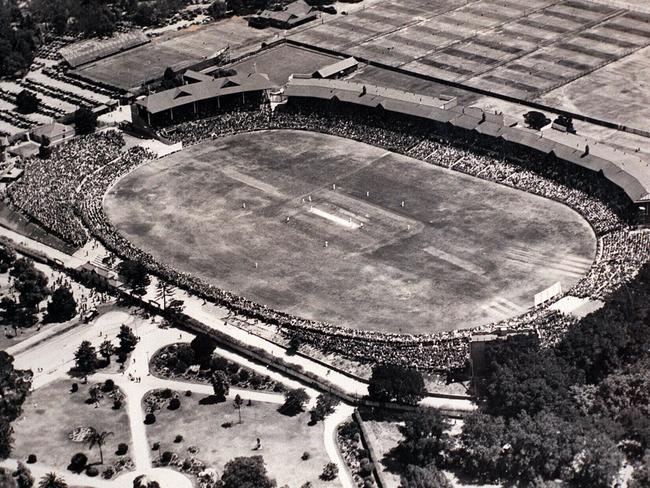
Three western stands were demolished that year — the George Giffen, Sir Edwin Smith (built 1922), and Mostyn Evan (1926).
By late 2010, the Western Grandstand, with seating for 14,000, was completed, and following a vote by SACA members in favour of a full redevelopment, the government increased its funding commitment to $535 million.
The Chappell and Sir Donald Bradman stands were demolished by 2012 and by March 2014, in time for the state election, the eastern stand was completed with a capacity of 19,000, bringing the overall seating capacity of the stadium to 53,500.
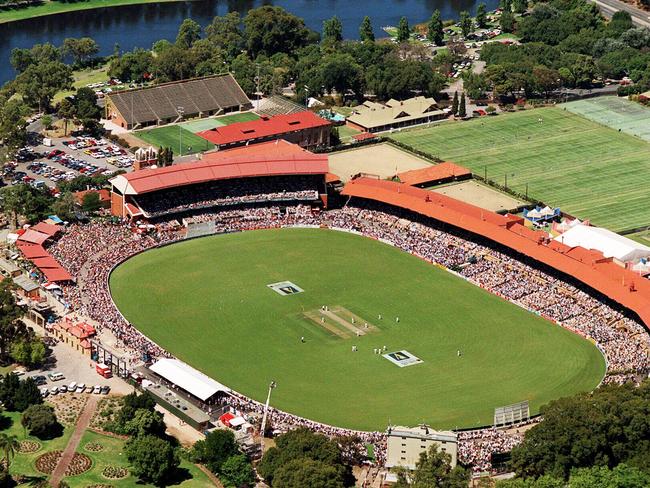
The Oval’s dimensions changed to 183m x 134m to better suit AFL, meaning the distinctive nature of the ground for cricket was changed. But Adelaide Oval continues to make history.
It hosted the world’s first day-night Test match, when Australia played New Zealand from November 27, 2015, and on Saturday another chapter will be written with a capacity crowd packing the ground for the first ever day-night Ashes Test.
Grand Oval of cricket
1871. Oval established with the formation of the South Australian Cricket Association.
1884. First Test match played at the Oval. England defeated Australia by eight wickets.
1911. Adelaide Oval scoreboard, designed by Kenneth Milne, erected.
1976. First One-Day International match held, between Australia and West Indies, over 40-overs.
1990. Sir Donald Bradman Stand built.
1997. Lights turned on at the ground.
2003. The Chappell Stands built on the eastern side.
2009. SA Government announces $450 million to redevelop Adelaide Oval into a multipurpose sports facility.
2010. Western Grandstand — with a seating capacity of 14,000 — completed.
2011. SA Government increased its funding commitment to $535 million.
2012. Chappell and Sir Donald Bradman stands demolished.
2014. New eastern stand completed, with a capacity of 19,000, bringing the overall seating capacity of the stadium to 53,500.
2015. The first ever day-night Test match is played, between Australia and New Zealand.
2017. First day-night Ashes Test to be played, starting Saturday, December 2.




